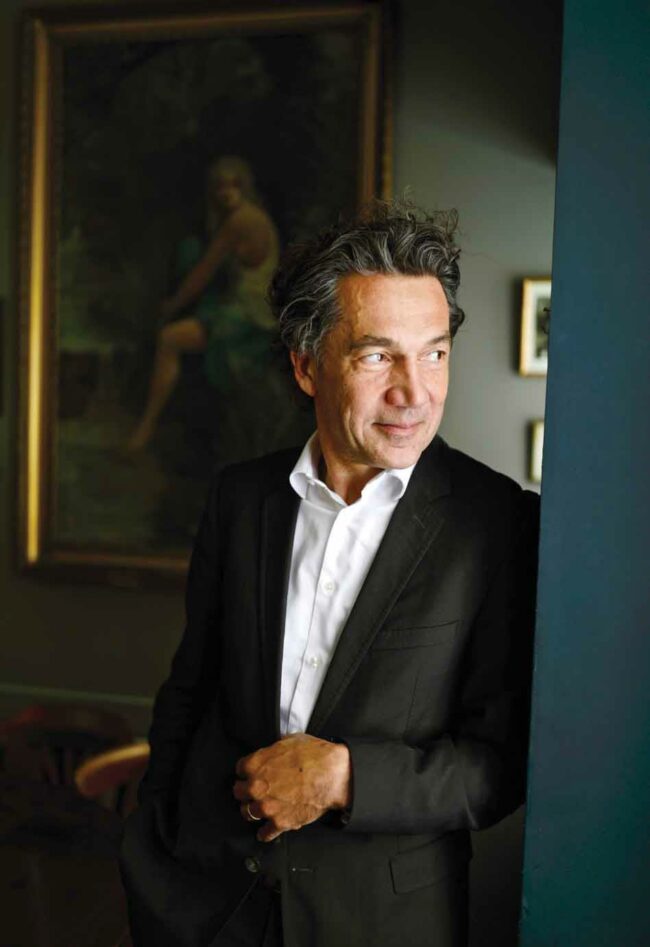In a breathtakingly beautiful and secluded area, a pinpoint on the map of the country where big, fast and many are the norm, Mu Chao has chosen to take his time to produce a few thousand bottles of good wine. Really?
Immensity is a concept probably invented by the Chinese. In China, things are not just bigger, they are immense. No new idea, new company, project or activity, is ever done on a small scale. In line with official guidelines, the Chinese got fast and furiously involved in wine producing, planting vast areas of vineyards, sometimes not quite at the most adapted places but always further than the eye can see. Bone-dry areas or tropical climates, biting cold or desertic heat, nothing stopped the Chinese-style expansion: quick and gigantic. Planting vines by the tens of thousands and churning out bottles of wine by the tens of millions every year.
Yet, just around the bend of a mountain pass, in the heart of a breathtakingly beautiful region — a UNESCO World Heritage Site — nestling between The Three Parallel Rivers, are two hectares cared for by Mu Chao. It was here that this young Chinese man from Tsing Tao (a city famous for its beer), with nothing in his history to predestine him for wine, decided to set up in business in order to make, by his own admission, ‘very high quality
wine, perhaps even the best in China’.
Muxin is in Diqing, a semi-autonomous Tibetan prefecture where the cultivation of vines goes back a century, with the French priests bringing in Catholicism and winemaking in its wake. A place where life is hard and almost totally isolated. History has led young people from the countryside to move to the cities, never to return home. This emptiness is felt in these lands that are as remote as they are beautiful. And regularly inaccessible — after almost every rainfall, landslides cut off the access roads to the villages and vineyards.
Mu Chao relies on the locals who live in these mountains to work his 30 mu (2 hectares)
planted at an altitude of 2,700 metres, at the foot of the Himalayas. Accompanied by his vineyard workers, Mu Chao tours his tens of micro-plots in a day, fragmented and scattered across the slopes of these mountains.
After years of pushing the vines to produce as much grape as possible (vines were part of a mixed farming system, high yield encouraged by volume-based revenue), it took the locals some time to get behind the idea of helping the plant give the best of itself. At this stage, that battle seems to have been won.
Good at physics and chemistry in school, Mu Chao decided to study wine. By chance, a university in his hometown taught French and was twinned with a university in Brest. It was there that he left, with the high school diploma in hand, to study French. At that time, wine was still defined by the yardstick of Bordeaux. Already an independent spirit, Mu Chao decided to go to Burgundy to study wine. He took his Diplome National d’Oenologie there. He found internships and short-term contracts, starting off at Louis Jadot…There, in the midst of cleaning a wine press, the young man realised that he did not want to spend his life cleaning wine presses.
He decided then and there that one day he would set up his own fine wine estate. He took a series of odd jobs at major estates, first in France (Clos de Tart, but also with Hervé Bizeul of Clos des Fées, Jean-Louis Chave, …) and then in the United States (Vérité).
“Three elements define my wines: balance,
elegance and terroir. Because, yes, a wine can tell
the story of its origins”. Mu Chao
Armed with all the knowledge he had accumulated over a few intense years, he returned to China to work two years for a local winery. He stayed there until the Covid crisis, which curtailed outlets for wine producers, speeding up his decision to set up his own business. He chose Yunnan because only Shandong and Yunnan don’t have to bury the vines in winter — a practice he is not keen on. And ‘in Shandong it rains too much’. He found plots of vines that had already been planted a few years ago. For the past four years, with his puzzle of micro-plots of 15-20 year-old vines, Mu Chao has been producing around 10,000 bottles every year, two-thirds of which are red (Cabernet Sauvignon and Merlot) and one third white (Chardonnay). Already very satisfied with the wine he produces, he improves his production methods every year. His biggest obstacle at the moment is exporting. Amateur of haute cuisine, his wines can be tasted in China’s major cities’ high-end restaurants and at the Cyclone private club in Hong Kong. Definitely worth a taste next time you are in the region.
TASTING
MUXIN RED 2020
Beautifully delicate aromas, with floral and red fruit notes, fine tannins, supple on the palate and a long, fresh finish. A delicate, subtle wine. TD
MUXIN RED 2021
More intense on the palate than the previous vintage, but with the same floral and fruity aromatic finesse and brilliantly constructed tannins. A very fine wine that demonstrates
the potential of a remarkably interesting estate. TD
MUXIN WHITE 2020
A truly astonishing wine, shared with a leading Burgundy producer who told me: “If China
is capable of producing a wine of this level, we are going to suffer!” The nose is typical
of white flowers, with a hint of lemon and a hint of elegant vanilla, non-drying, premium
stave-wood, a perfect balance on the palate between crystalline fluidity and full body, and
a rising finish. All the blind tasters thought it was a lovely Puligny Montrachet, including
the Burgundians! MB
photo Muxin
This article is part of the B+D Ultimate Guide to Wines of China 2024 available here https://bettanedesseauveasia.com/wines-of-china-2024























